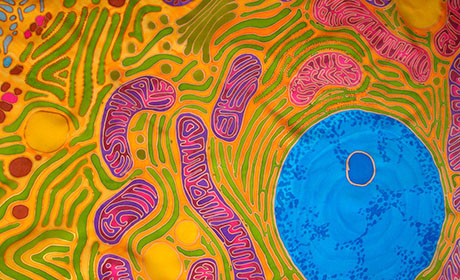

Aging starts from the inside, with processes breaking down at the microscopic level and then snowballing to larger effects that cause the body to decline. But there’s more to the story than that. According to a research team led by led by scientists at University of Utah Health aging can stem from too much of a good thing. Elevated levels of an important nutrient— the amino acid cysteine — jump starts the aging process. Their study appears online in the journal Cell.
Just as important, lowering levels of cysteine keeps cells healthy for longer as they get older.
“This gives us a different view of aging,” says Adam Hughes, Ph.D., senior author of the study and an assistant professor of Biochemistry at U of U Health. “While amino acids had previously been linked to aging, up until now how they caused cellular demise had been unclear.”
Although the discovery was made in yeast, the underlying mechanisms are highly conserved across species. These insights could enhance our understanding of aging in humans and could have implications for treating age-related diseases such as Parkinson’s and Alzheimer’s.
Even within the tiny confines of the cell, everything has its place. Nutrients, metabolites, and proteins are among the components that are carefully sorted into compartments, the cell’s organelles. Previous work by Hughes had linked degradation of a specific type of organelle, the vacuole, to aging, but no one understood why.
This new study sheds light on that mystery by demonstrating that when the organelle fails, its contents wind up in the wrong place. The amino acid cysteine accumulates outside the vacuole and effectively becomes toxic when it interferes with iron in the cell. The indispensable metabolite is required to keep the cell’s engine, mitochondria, running smoothly. As iron levels drop, mitochondria deteriorate and the health of the cell declines.
The predicament is reminiscent of what can happen when an old car sputters then dies. As gaskets break down, oil leaks into the engine compartment and interferes with equipment that keeps the engine purring. Over time the disarray spreads, stress mounts and the engine fails.
“Our results have set a new base line to move into an entirely new area to investigate how amino acids become toxic and how the cell senses this and copes with it,” says Hughes.
Misplaced cysteines may not be the only amino acid that wreaks havoc, he points out. Changes in the compartmentalization of other amino acids may invoke chaos in other ways. If such breaches are a normal consequence of aging and disease in people, the challenge is to continue to identify mechanisms that cells use to keep the order. By following nature’s lead, science may come up with novel ways to combat problems that arise as we age.
# # #
In addition to Hughes, co-authors are Casey Hughes, Troy Coody, Mi-Young Jeong, Jordan Berg and Dennis Winge from U of U Health. The research publishes as “Cysteine toxicity drives age-related mitochondrial decline by altering iron homeostasis” and was funded by the National Institutes of Health, American Federation for Aging Research, Glenn Foundation for Medical Research and the Searle Scholars Program.